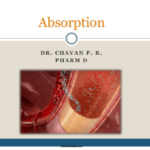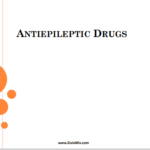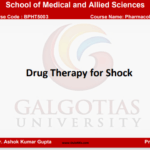MICROSPHERES &
MICROCAPSULES
NIVYA.P
M.PHARM – I YEAR
DEPARTMENT OF PHARMACEUTICS
MADRAS MEDICAL COLLEGE
CHENNAI- 03
www.DuloMix.com 1
CONTENTS
▪ INTRODUCTION
▪ POLYMERS USED
▪ ADVANTAGES
▪ METHODS OF PREPARATION
▪ FACTORS AFFECTING THE RELEASE
OF THE DRUG
▪ APPLICATIONS
▪ MONOCLONAL ANTIBODY
▪ PRODUCTION
▪ APPLICATIONS
▪ REFERENCES
www.DuloMix.com 2
INTRODUCTION
▪ Microencapsulation of pharmaceuticals was
first investigated in the year 1931 by
preparing spheres of gelatin using
coacervation technique.
▪ The micro particulate delivery systems are
considered and accepted as a reliable means
to deliver the drug to the target site with
specificity, if modified, and to maintain the
desired concentration at the site of interest
without untoward effect.
www.DuloMix.com 3
Microspheres
▪ Small spherical
particles.
▪ Solid matrix
particle.
▪ It is a
micrometric
reservoir
system.
▪ Diameter
ranges from 1µ
to 1000µ.
Fig 1:Microspheres
www.DuloMix.com 4
Microcapsules
▪ Microcapsules
can be the small
entities that
contain an active
agent or core
material
surrounded by a
shell or
embedded into a
matrix structure.
▪ It is a
micrometric
matrix system.
Fig 2 : Microcapsules
www.DuloMix.com 5
ADVANTAGES
▪ Sustained or prolonged release of the drug.
Eg : Glibenclamide.
▪ To masking the organoleptic properties.
Eg: Paracetamol, Nitrofurantoine.
▪ Liquid drugs can be converted in a free flowing powder.
▪ The drugs sensitive to moisture, light and oxygen can be
protected by this technique.
Eg: Nifedipine-Photo instability.
▪ Prevent the incompatibility between drugs.
Eg: Hydroquinone.
www.DuloMix.com 6
▪ Drug volatilation can be prevented by this technique.
Eg. Aspirin.
▪ Reduction in toxicity and GI irritation including with KCL
and ferrous sulphate can be achieved by
microencapsulation.
▪ Enhanced stability, it prevent from oxidation.
Eg.Vitamin A palmitate.
▪ Used to prepare intrauterine contraceptive device.
www.DuloMix.com 7
DISADVANTAGES
▪ The costs of the materials higher than those of
standard formulations.
▪ The fate of polymer matrix and its effect on the
environment.
▪ The fate of polymer additives such as plasticizers,
stabilizers, antioxidants and fillers.
▪ Reproducibility is less.
▪ Process conditions like change in temperature, pH,
solvent addition, and evaporation/agitation may
influence the stability of core particles to be
encapsulated.
www.DuloMix.com 8
Mechanism and kinetics of drug release
Diffusion
Diffusion is the most commonly involved mechanism
wherein the dissolution fluid penetrates the shell, dissolves
the core and leak out through the interstitial channels.
Thus, the overall release depends on,
▪ The rate at which dissolution fluid penetrates the wall
of microcapsules.
▪ The rate at which drug dissolves in the dissolution
fluid.
▪ The rate at which the dissolved drug leak out and
disperse from the surface.
www.DuloMix.com 9
Dissolution
▪ Dissolution rate of polymer coat determines the
release rate of drug from the microcapsule.
Osmosis
▪ The polymer coat of microcapsule acts as semi
permeable membrane and allows the creation of an
osmotic pressure.
Erosion
▪ Erosion of coat due to pH and/or enzymatic
hydrolysis causes drug release
www.DuloMix.com 10
Prerequisites For Ideal Microparticulate
Carriers
▪ Longer duration of action
▪ Increase of therapeutic efficiency
▪ Control of content release
▪ Protection of drugs
▪ Reduction of toxicity
▪ Biocompatibility
▪ Relative stability
▪ Water solubility or dispersability
▪ Bioresorbability
▪ Targetability
www.DuloMix.com 11
POLYMERS USED
SYNTHETIC POLYMERS
Non-biodegradable
▪ Acrolein
▪ Epoxy polymers
Biodegradable
▪ Polyanhydrides
▪ Polyalkyl cyano acrylates
▪ Lactides and glycolides and their copolymers
NATURAL MATERIALS
Proteins
▪ Albumin, Gelatin, Collagen
Carbohydrates
▪ Starch, Agarose, Chitosan
www.DuloMix.com 12
Cntd..
Chemically modified Carbohydrates
▪ Poly(acryl)dextran
▪ Poly(acryl)starch.
Examples:
▪ PLGA (poly lactic-co-glycolic acid) microsphere
▪ Gelatin microspheres
▪ Dextran microspheres
▪ Polyanhydride microspheres
▪ Poly phosphazene microspheres
▪ Chitosan microspheres
www.DuloMix.com 13
Materials used for preparation
Core material
▪ The core material, defined as the specific
material to be coated, can be liquid or solid in
nature.
▪ The solid core be active constituents, stabilizers,
diluents, excipients, and release-rate retardants
or accelerators.
▪ Liquid Core Material- Solvents, catalyst,
sugars, salts.
▪ Solid Core Material- Dextrins, minerals, bases,
pharmaceuticals.
www.DuloMix.com 14
Coating material
▪ Innovative coating polymers have also been developed for
some special applications particularly among the bio
adhesives and muco adhesives.
Eg: Ethyl cellulose, carboxylate and amino derivatives.
Water Soluble resins
▪ Hydroxyethylcellulose, Polyvinylpyrrolidine,starch.
Water insoluble resins
▪ EthylCellulose,Polyethylene,Polymethacrylate.
www.DuloMix.com 15
METHODS OF PREPARATION:
1) Single Emulsion Technique
2) Double Emulsion Technique
3) Polymerization Technique
4) Phase Separation Coacervation
5) Spray drying
6) Solvent Extraction
www.DuloMix.com 16
Factors to be considered
▪ Particle size requirement
▪ The drug and protein should not be
adversely affected by the process.
▪ Reproducibility of release profile and
method
▪ No stability problem
▪ No toxic product with the final product.
www.DuloMix.com 17
1) Single Emulsion Technique
Aqueous solution /suspension of polymer
Stirring / sonication
Dispersion in organic phase oil/chloroform
Cross linking
Heat denaturation Chemical cross linking
By adding dispersion to heated oil ( Glutaraldehyde,HCHO,
CHCl3 )
www.DuloMix.com 18
Microspheres in organic phase
Centrifugation,washing,separation
Microspheres
www.DuloMix.com 19
2) Double Emulsion Technique
Aqueous solution of polymer
Dispersion in oil/organic phase, vigorous
homogenization(sonication )
Primary emulsion(w/o)
Addition of aqueous solution of PVA
W/O/W multiple emulsion
Addition to large Aqueous phase
denaturation /hardening
Microspheres in solution
Separation, washing, Drying
Microspheres
www.DuloMix.com 20
3)Polymerization technique
Types:
▪ Bulk polymerization
▪ Suspension precipitation polymerization
▪ Emulsion polymerization
▪ Miceller polymerization
www.DuloMix.com 21
Bulk polymerization:
Monomer Bioactive material Initiator
Heated to initiate polymerization
Initiator accelerate rate of
Reaction
Polymer(Block)
Moulded/fragmented
MICROSPHERES
www.DuloMix.com 22
Suspension polymerization
Monomer Bioactive material Initiator
Dispersion in water and stabilizer
Droplets
Polymerization Vigorous agitation
Heat/irradiation
Separation and Drying
MICROSPHERES
www.DuloMix.com 23
Emulsion Polymerization
Monomer/ Aq.Solution of NaOH,
Bioactive material Initiator, Surfactant ,
Stabilizer
Dispersion with vigorous
stirring
Micellar sol. of polymer in aqueous medium
Polymerization
Microspheres formation
MICROSPHERES
www.DuloMix.com 24
4)Phase Separation Coacervation
Aq./organic solution of polymer
Drug
Drug dispersed or dissolved in the polymer solution
Phase separation by different means
Polymer rich in globules
Hardening
Microspheres in aq./organic phase
Separation / Drying
MICROSPHERES
www.DuloMix.com 25
5)Spray Drying
Polymer dissolve in volatile organic solvent
(Acetone , Dichloromethane)
C
Drug dispersed in polymer solution under high speed
homogenization
Atomized in a stream of hot air
Small droplets or fine mist form
www.DuloMix.com 26
Leads to formation of Microspheres due to solvent
evaporation
Microspheres separated from hot air by cyclone separator
Trace of solvent are removed by vacuum drying
www.DuloMix.com 27
6)Solvent extraction
Drug is dispersed in organic solvent
Organic phase is removed by extraction with water
(This process decreasing hardening time for microspheres)
Hardened microspheres
www.DuloMix.com 28
FACTORS AFFECTING RELEASE OF THE DRUG
Drug
▪ Position in microspheres
▪ Molecular weight
▪ Physiochemical properties
▪ Concentration
▪ Interaction with matrix
Environment
▪ pH
▪ Polarity
▪ Presence of enzyme
www.DuloMix.com 29
Microspheres
▪ Type and amount of matrix polymer
▪ Size and density of the microspheres
▪ Extent of cross linking ,denaturation or polymerization
▪ Adjuvants
Characterization of Microspheres
▪ Characterization is an important phenomenon to determine the
micro structure of the microspheres.
▪ Used to determine the Release and stability of the carrier.
www.DuloMix.com 30
Particle size and shape
Determination of shape and structure of micro particles.
▪ Light microscopy
▪ Laser light scattering microscopy
▪ Scanning electron microscopy
▪ Confocal laser scanning microscopy
Electron microscopy for chemical analysis
▪ Used to determine the atomic composition of the surface .
▪ ESCA can be used to determine the surfacial degradation of
the biodegradable microspheres.
▪ FTIR – Degradation of polymer matrix of the system
▪ Attenuated Total Reflectance FTIR – It provides information
about surface composition of the microsphere.
www.DuloMix.com 31
Angle of contact
▪ Measure the wetting property of microparticulate carrier.
▪ It is measured at the solid/air/water interface.
Density determination
▪ Density measured by using a multivolume pychnometer.
IR spectoscopy
▪ To measure deviation in composition.
Isoelectric point
▪ Micro electrophoresis apparatus is used to measure
electrophoretic mobility of microspheres from which
isoelectric point can be determine.
▪ It can be correlated to surface charge or ion adsorption
of microspheres.
Surface carboxylic acid residue
▪ Measured by using radioactive glycine.
▪ Scintillation counter.
www.DuloMix.com 32
Surface amino acid residue
▪ Determined by using 14 C- acetic acid conjugate.
▪ Liquid Scintillation counter.
Capture Efficiency
▪ The percent entrapment can be determined by allowing washed
microspheres to lyse.
Actual content
% Entrapment = × 100
Theoretical content
Release study
▪ Usually carried out in phosphate saline buffer pH 7.4.
▪ Two method
1) Rotating paddle dissolution Apparatus
2) Dialysis method
www.DuloMix.com 33
DIALYSIS METHOD
▪ Used to study the release of drug or proteins from the
microsphere.
▪ Microsphere are kept in the dialysis bag or tube with
membrane while dialysis media continuously stirred and
sample of dialysate are taken.
▪ The withdrawn sample is estimated for drug content and every
time equal volume of sample is replaced using fresh buffer
solution.
www.DuloMix.com 34
Application of microspheres in pharmaceutical
industry
▪ For taste and odour masking
▪ To delay the volatilization
▪ For separation of incompatible substances
▪ For improvement of flow properties of powders
▪ To increase the stability of the drug against the external
conditions
▪ For safe handling of toxic substances
▪ To improve the solubility of water insoluble
▪ Substances by incorporating dispersion of such in aqueous
media .
www.DuloMix.com 35
▪ For targeting delivery of Anti-neoplastic drug.
▪ In vaccine delivery.
▪ In cosmetic industry.
▪ For delivery of several analgesic drug like Naproxen sodium.
▪ For delivery of Rifampicin in TB.
▪ Increase retention time of drug in ocular system like
Pilocarpine nitrate.
▪ For delivery of certain gastric acid labile antibiotics like
Penicillin.
www.DuloMix.com 36
Targeting using Micro particulate carriers
▪ Targeting means “The therapeutic efficacy of the drug relies
on its access and specific interaction with its candidate
receptors.”
Ocular
▪ The eye and the cornea are easily accessible targets.
▪ The retention of micro particulate system can be attained by
using gel form.
Nasal
▪ The intranasal route is exploited for the delivery of the
peptides and proteins.
▪ Bio adhesive microspheres are used as alternative to the gel
dosage formulations.
Oral
▪ The most preferred convenient route.
▪ It also preferred for delivery of soluble antigen.
www.DuloMix.com 37
Magnetic microspheres
▪ It is a biophysical approach.
▪ Magnetic microspheres are prepared by mixing water
soluble drugs and 10 nm magnetite in aqueous solvent of
matrix material.
▪ Magnetic targeting is based on the force exerted by
external magnetic field over the magnetically susceptible
microspheres
▪ Eg: Amphotericin B ,Interleukin 2.
Microspheres in vaccine drug delivery
▪ Biodegradable delivery system of vaccine can be given by
parenteral route.
▪ Polymers used- Poly lactic acid, poly glycolic acid,
polylactides co glycosides.
▪ Eg: Diphtheria toxoid, Hepatitis B surface antigen.
www.DuloMix.com 38
Specific advantages:
▪ Improved antigenicity by adjuvant action
▪ Modulation of antigen release
▪ Stabilization of antigen
Microspheres in immune system
▪ Microspheres interact with macrophages release the
antigens which are phagocytosized by antigen presenting
cells are responsible for activation of B and T cells.
▪ Eg: Bovine serum albumin, Tetanus toxoid.
Micro sponges
▪ It consist of non collapsible structures with porous
surface through which active ingredients are released in
a controlled manner.
www.DuloMix.com 39
MONOCLONAL
ANTIBODY
www.DuloMix.com 40
Monoclonal Antibodies
▪ An antibody is a protein used by the immune system to
identify and neutralize foreign objects like bacteria and
viruses. Each antibody recognizes a specific antigen
unique to its target.
▪ Monoclonal antibodies (mAb) are antibodies that are
identical because they were produced by one type of
immune cell, all clones of a single parent cell.
▪ Polyclonal antibodies are antibodies that are derived
from different cell lines. They differ in amino acid
sequence.
www.DuloMix.com 41
Advantages
▪ When drugs are delivered as antibody conjugates th conjugates
can specifically reach the target cells without causing any
damage to the normal tissue
Disadvantages
▪ Monoclonal antibody production, a time consuming process.
▪ Average affinity of monoclonal antibodies are generally lower.
▪ Any physical or chemical treatment will affect all monoclonal
antibodies in that production.
www.DuloMix.com 42
PRODUCTION OF MONOCLONAL
ANTIBODY
HYBRIDOMA TECHNOLOGY
Step 1: – Immunization Of Mice & Selection Of Mouse Donor For
Generation Of Hybridoma cells
ANTIGEN ( Intact cell/
Whole cell membrane/
micro-organisms )
+
ADJUVANT Ab titre reached in Serum
(emulsification)
www.DuloMix.com 43
Step 2: – Screening Of Mice For Antibody Production
After several
weeks of
immunization
Serum Antibody Titre Determined
(Technique: – ELISA / Flow cytometery)
Titre too low Titre High
BOOST BOOST
(Pure antigen) (Pure antigen)
www.DuloMix.com 44
Step 3: – Preparation of Myeloma Cells
+ HAT(Hypoxanthine
Myeloma Cells Aminopterin
Immortal Tumor Of Lymphocytes Thymidine)Medium
Myeloma Cells
HGPRT-
High Viability & Rapid Growth
www.DuloMix.com 45
Step 4: – Fusion of Myeloma Cells with Immune Spleen Cells
Selection of Hybridoma Cells
PEG
FUSION
SPLEEN CELLS MYELOMA CELLS
Feeder Cells
Growth Medium
HYBRIDOMA CELLS
ELISA PLATE
HAT Medium
www.DuloMix.com 46
Step 5: – Cloning of Hybridoma Cell Lines by “ Limiting
Dilution” or Expansion
A. Clone each +ve Culture
B. Test each supernatant for antibodies
C. Expand +ve Clones
Propagate
Invitro Invivo
Tissue Mouse Ascites method
Culture
Method
HARVEST MONOCLONAL ANTIBODY
www.DuloMix.com 47
Purification techniques
▪ Cells, cell debris, lipids, and clotted material are first
removed, typically by filtration with a 0.45𝜇m filter.
▪ Chromatography
(I) Ion-exchange chromatography
(II) Antigen affinity chromatography
www.DuloMix.com 48
Types of mAbs
▪ Murin source mAbs: Rodent mAbs with excellent affinities and
specificities, generated using conventional hybridoma
technology. Clinical efficacy compromised by HAMA (human
anti murine antibody) response, which lead to allergic or
immune complex hypersensitivities.
▪ Chimeric mAbs: Chimers combine the human constant regions
with the intact rodent variable regions. Affinity and specificity
unchanged. Also cause human antichimeric antibody response
(30% murine resource)
▪ Humanized mAbs: Contained only the CDRs of the rodent
variable region grafted onto human Framework Regions.
www.DuloMix.com 49
Applications of Monoclonal Antibodies
Immunodiagnostic Applications
▪ Detects protein of interest either by blotting or
immunofluorescence
▪ Enzyme linked immunosorbant assay
Therapeutic Applications
▪ Transplant rejection
▪ Cancer
▪ Autoimmune disorders
▪ Inflammatory disease
www.DuloMix.com 50
Immunodiagnosis of pregnancy
▪ Onset of pregnancy can be determined monoclonal anti-ß
hCG antibody was labeled with the enzyme, horseradish
peroxidase.
Immunodiagnosis of viral, bacterial and parasitic infections
▪ Enzyme immunoassay have been developed for bacterial,
viral, parasitic infections.
Blood group typing
▪ Monoclonal antibodies used as a antisera in blood grouping.
www.DuloMix.com 51
Analysis of antigenic determinants
▪ Antigenic fingerprinting with monoclonal antibody used
in the development of immunodiagnostic tests and in the
field of vaccine development.
Monoclonal antibodies in cancer therapy
▪ MCA have been used in patients suffering from
leukemia’s, lymphomas, melanomas, colorectal cancer.
▪ Eg. Arcitumomab – Anti-carcinoembryonic antigen
(CEA) antibody labelled with technetium 99 (99Tc)
▪ Used for imaging patients with colorectal carcinoma.
▪ Nofetumuma – Mice mab coupled with 99Tc for
diagnosis to determine extent and stage of disease of
small cell lung cancer.
www.DuloMix.com 52
Anti-inflammatory and immunosuppressant mabs
▪ Muromonab (OKT-3)-Blockage suppresses activity of T cells.
▪ Adalimumab, Etanercept and infliximab- Suppression of release
of inflammatory cytokines IL-1, IL-6.
Investigation of receptor ligand interaction
Used to study the receptors structure and function.
It includes
▪ Affinity purification of receptors
▪ Biochemical characterization
▪ Function
▪ Location
▪ Identification of receptor –ligand internationalization and
recycling pathways.
www.DuloMix.com 53
References
1. Gupta AK., Dey BK., Microencapsulation For Controlled
Drug Delivery, Sunsari Technical College Journal, Volume I
Issue 1, October 2012 .
2. Jain N.K.,controlled and Novel Drug Delivery, CBS
Publishers and Distributors, New Delhi, First edition 1997
Reprint in (2001)Page no 219-250.
3. Vyas S.P. and Khar R.K., Targeted and controlled drug
delivery system, Vallabhprakashan, New Delhi, First edition
Page no 418-454.
4. https://grants.nih.gov>policy.
www.DuloMix.com 54
THANK YOU
www.DuloMix.com 55










